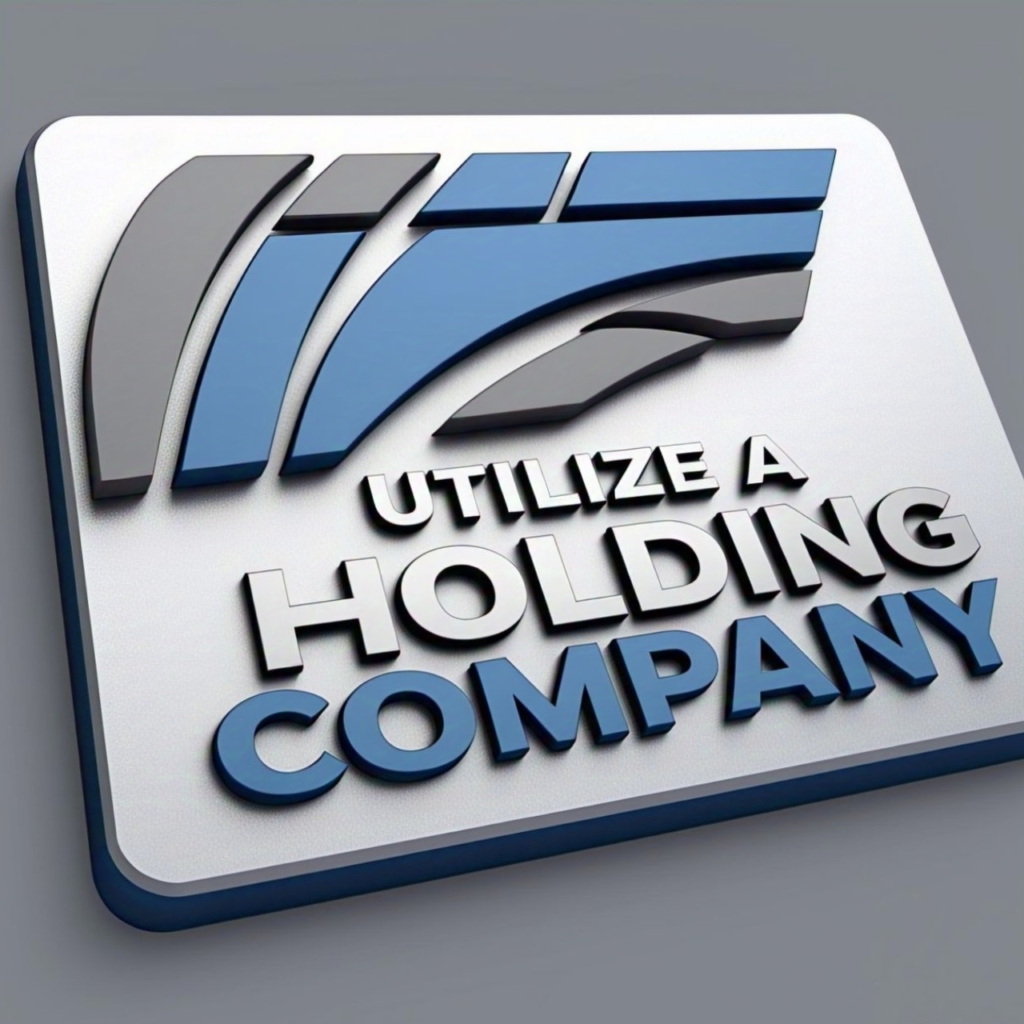10 POWERFUL TAX PLANNING STRATEGIES TO SLASH YOUR BUSINESS TAX LIABILITY
As a business owner in Canada, managing your tax liability is crucial to maintaining profitability and achieving long-term success. With the ever-changing tax laws and regulations, it can be overwhelming to navigate the complexities of tax planning. However, with the right strategies and expert guidance, you can minimize your tax burden and maximize your financial growth.
In this comprehensive guide, we’ll explore 10 powerful tax planning strategies to help you slash your business tax liability. Whether you’re a small business owner in Ontario or a large corporation in Canada, these practical solutions will help you optimize your tax planning and achieve your financial goals.
Strategy 1: TAKE ADVANTAGE OF TAX CREDITS AND INCENTIVES

As a business owner in Canada, you may be eligible for various tax credits and incentives that can help reduce your tax liability. These credits can be claimed for expenses related to research and development, hiring and training employees, and investing in environmental sustainability initiatives.
For example, the Scientific Research and Experimental Development (SR&ED) tax credit program provides eligible businesses with a refundable tax credit of up to 35% of qualified expenditures. Similarly, the Canada Job Grant program offers employers a maximum grant of $10,000 per employee for training and development programs.
To take advantage of these tax credits and incentives, it’s essential to consult with a Canada tax expert or financial advisor in Ontario who can help you navigate the eligibility criteria and application process.
TYPES OF TAX CREDITS AND INCENTIVES AVAILABLE
1. Scientific Research and Experimental Development (SR&ED) Tax Credit
– Refundable tax credit of up to 35% of qualified expenditures
– Eligible expenditures include salaries, wages, and materials related to SR&ED activities
2. Canada Job Grant
– Maximum grant of $10,000 per employee for training and development programs
– Eligible employers include small, medium, and large businesses
3. Apprenticeship Job Creation Tax Credit
– Non-refundable tax credit of up to $2,000 per year for apprenticeship programs
– Eligible employers include small, medium, and large businesses
4. Investment Tax Credit (ITC)
– Non-refundable tax credit of up to 10% of qualified investments
– Eligible investments include purchases of new machinery and equipment
5. Film and Video Production Tax Credit
– Refundable tax credit of up to 16% of qualified production expenditures
– Eligible productions include film, television, and digital media projects
6. Digital Media Tax Credit
– Refundable tax credit of up to 17.5% of qualified production expenditures
– Eligible productions include digital media projects such as video games and interactive websites
7. Ontario Interactive Digital Media Tax Credit
– Refundable tax credit of up to 40% of qualified production expenditures
– Eligible productions include interactive digital media projects such as video games and educational software
8. Research and Development (R&D) Tax Credit
– Non-refundable tax credit of up to 15% of qualified R&D expenditures
– Eligible expenditures include salaries, wages, and materials related to R&D activities
9. Environmental Sustainability Tax Credit
– Non-refundable tax credit of up to 10% of qualified environmental sustainability expenditures
– Eligible expenditures include purchases of energy-efficient equipment and materials
10. Accessibility Tax Credit
– Non-refundable tax credit of up to 15% of qualified accessibility expenditures
– Eligible expenditures include purchases of accessible equipment and materials
11. Charity Donation Tax Credit
– Non-refundable tax credit of up to 29% of qualified charity donations
– Eligible donations include cash donations to registered charities
12. Cultural Industries Tax Credit
– Refundable tax credit of up to 30% of qualified production expenditures
– Eligible productions include film, television, and digital media projects that promote Canadian culture
13. Export Market Development Tax Credit
– Non-refundable tax credit of up to 25% of qualified export market development expenditures
– Eligible expenditures include travel expenses, marketing materials, and trade show fees
14. Innovation Tax Credit
– Non-refundable tax credit of up to 10% of qualified innovation expenditures
– Eligible expenditures include purchases of new technology and equipment
15. Small Business Job Credit
– Non-refundable tax credit of up to $1,000 per year for small businesses
– Eligible employers include small businesses with gross revenues of less than $500,000
These are just some of the types of tax credits and incentives available to businesses in Canada. It’s essential to consult with a tax expert or financial advisor to determine which credits and incentives your business may be eligible for.
ELIGIBILITY CRITERIA AND APPLICATION PROCESS
The following are the eligibility criteria and application process for tax credits and incentives in Canada:
Eligibility Criteria
1. Business Structure: The business must be a Canadian-controlled private corporation (CCPC), a sole proprietorship, or a partnership.
2. Industry: The business must operate in a specific industry, such as technology, manufacturing, or tourism.
3. Location: The business must be located in a specific region or province.
4. Size: The business must meet specific size requirements, such as number of employees or gross revenue.
5. Project Type: The project must meet specific requirements, such as research and development, innovation, or export market development.
Application Process
1. Review Eligibility Criteria: Review the eligibility criteria for the specific tax credit or incentive program.
2. Gather Required Documents: Gather all required documents, such as financial statements, business plans, and project proposals.
3. Complete Application Form: Complete the application form for the specific tax credit or incentive program.
4. Submit Application: Submit the application and supporting documents to the relevant government agency or funding organization.
5. Review and Approval: The application will be reviewed and approved by the government agency or funding organization.
6. Claim Tax Credit: Once approved, claim the tax credit on your tax return.
Required Documents
1. Business Plan: A comprehensive business plan outlining the project goals, objectives, and timelines.
2. Financial Statements: Financial statements, such as income statements and balance sheets, to demonstrate the business’s financial viability.
3. Project Proposal: A detailed project proposal outlining the project scope, budget, and timelines.
4. Proof of Business Registration: Proof of business registration, such as articles of incorporation or a business license.
5. Tax Returns: Copies of previous tax returns to demonstrate the business’s tax compliance.
Government Agencies and Funding Organizations
1. Canada Revenue Agency (CRA): Administers various tax credit programs, such as the Scientific Research and Experimental Development (SR&ED) tax credit.
2. Innovation, Science and Economic Development Canada (ISED): Administers various funding programs, such as the Strategic Innovation Fund.
3. Regional Development Agencies (RDAs): Administer various funding programs, such as the Canada Job Grant.
4. Provincial and Territorial Governments: Administer various tax credit and funding programs specific to their region.
Timeline
1. Application Deadline: Varies depending on the program, but typically ranges from 30 days to 6 months after the project start date.
2. Review and Approval: Typically takes 2-6 months after submitting the application.
3. Tax Credit Claim: Can be claimed on the tax return for the year in which the project was completed.
Tips and Best Practices
1. Consult with a Tax Expert: Consult with a tax expert or financial advisor to ensure eligibility and to navigate the application process.
2. Keep Accurate Records: Keep accurate records of project expenses, timelines, and outcomes to support the application.
3. Submit a Comprehensive Application: Submit a comprehensive application package, including all required documents and information.
BENEFITS OF CLAIMING TAX CREDITS AND INCENTIVES
Here are the benefits of claiming tax credits and incentives:
1. Reduced Tax Liability
Claiming tax credits and incentives can significantly reduce a business’s tax liability, resulting in increased cash flow and profitability.
2. Increased Cash Flow
Tax credits and incentives can provide businesses with a source of non-repayable funding, which can be used to invest in new projects, hire new employees, or pay off debts.
3. Improved Competitiveness
By reducing their tax liability, businesses can improve their competitiveness in the market, invest in new technologies, and expand their operations.
4. Encourages Innovation and R&D
Tax credits and incentives can encourage businesses to invest in research and development, leading to the creation of new products, services, and processes.
5. Job Creation and Economic Growth
Tax credits and incentives can lead to the creation of new jobs, stimulating economic growth and development in local communities.
6. Increased Investment in Key Sectors
Tax credits and incentives can encourage businesses to invest in key sectors, such as clean technology, digital media, and advanced manufacturing.
7. Simplified Tax Compliance
Claiming tax credits and incentives can simplify tax compliance for businesses, reducing the administrative burden and costs associated with tax planning.
8. Access to Additional Funding
Tax credits and incentives can provide businesses with access to additional funding, such as government grants and loans, to support their growth and development.
9. Enhanced Business Credibility
Claiming tax credits and incentives can enhance a business’s credibility and reputation, demonstrating their commitment to innovation, sustainability, and community development.
10. Long-term Sustainability
Tax credits and incentives can support the long-term sustainability of businesses, enabling them to invest in new technologies, reduce their environmental impact, and improve their social responsibility.
By claiming tax credits and incentives, businesses can achieve significant financial benefits, improve their competitiveness, and contribute to the growth and development of their local communities.
Strategy 2: UTILIZE TAX-DEFERRED SAVINGS PLANS

Tax-deferred savings plans, such as Registered Retirement Savings Plans (RRSPs) and Tax-Free Savings Accounts (TFSAs), can help you reduce your tax liability while saving for the future.
RRSPs allow you to contribute a portion of your income to a registered retirement savings plan, which reduces your taxable income for the year. The funds in the plan grow tax-free until withdrawal, at which point they are taxed as income.
TFSAs, on the other hand, allow you to contribute a specified amount of money to a tax-free savings account, where the funds grow tax-free and are not taxed upon withdrawal.
By utilizing tax-deferred savings plans, you can reduce your tax liability while building a secure financial future.
TYPES OF TAX-DEFERRED SAVINGS PLANS AVAILABLE
The following are the types of tax-deferred savings plans available in Canada:
1. Registered Retirement Savings Plans (RRSPs)
– Contribution limit: 18% of earned income, up to a maximum of $29,210 in 2022
– Tax deduction: Contributions are tax-deductible
– Tax-deferred growth: Investments grow tax-free until withdrawal
– Withdrawal rules: Withdrawals are taxed as income, minimum withdrawal requirements start at age 72
2. Tax-Free Savings Accounts (TFSAs)
– Contribution limit: $6,000 in 2022
– Tax-free growth: Investments grow tax-free
– Tax-free withdrawals: Withdrawals are tax-free
– No withdrawal requirements: No minimum withdrawal requirements
3. Registered Education Savings Plans (RESPs)
– Contribution limit: $50,000 lifetime limit per beneficiary
– Tax-free growth: Investments grow tax-free
– Tax-free withdrawals: Withdrawals are tax-free if used for education expenses
– Government grants: Eligible for government grants, such as the Canada Education Savings Grant
4. Registered Disability Savings Plans (RDSPs)
– Contribution limit: $200,000 lifetime limit per beneficiary
– Tax-free growth: Investments grow tax-free
– Tax-free withdrawals: Withdrawals are tax-free if used for disability-related expenses
– Government grants: Eligible for government grants, such as the Canada Disability Savings Grant
5. Deferred Profit Sharing Plans (DPSPs)
– Contribution limit: Employer contributions only, up to 18% of employee’s salary
– Tax-deferred growth: Investments grow tax-free until withdrawal
– Withdrawal rules: Withdrawals are taxed as income
6. Group Registered Retirement Savings Plans (Group RRSPs)
– Contribution limit: Employer and employee contributions, up to 18% of employee’s salary
– Tax-deferred growth: Investments grow tax-free until withdrawal
– Withdrawal rules: Withdrawals are taxed as income
7. Individual Pension Plans (IPPs)
– Contribution limit: Employer contributions only, up to 18% of employee’s salary
– Tax-deferred growth: Investments grow tax-free until withdrawal
– Withdrawal rules: Withdrawals are taxed as income
8. Retirement Compensation Arrangements (RCAs)
– Contribution limit: Employer contributions only, up to 18% of employee’s salary
– Tax-deferred growth: Investments grow tax-free until withdrawal
– Withdrawal rules: Withdrawals are taxed as income
It’s essential to consult with a financial advisor or tax professional to determine the best tax-deferred savings plan for your specific needs and goals.
BENEFITS OF USING TAX-DEFERRED SAVINGS PLANS
Here are the benefits of using tax-deferred savings plans:
1. Tax-Deferred Growth
Tax-deferred savings plans allow investments to grow tax-free until withdrawal, resulting in significant tax savings.
2. Reduced Tax Liability
Contributions to tax-deferred savings plans are tax-deductible, reducing taxable income and lowering tax liability.
3. Increased Retirement Savings
Tax-deferred savings plans encourage retirement savings by providing a tax-free environment for investments to grow.
4. Flexibility
Tax-deferred savings plans offer flexibility in terms of investment options, contribution limits, and withdrawal rules.
5. Estate Planning Benefits
Tax-deferred savings plans can provide estate planning benefits, such as naming beneficiaries and avoiding probate.
6. Protection from Creditors
Tax-deferred savings plans often provide protection from creditors, ensuring that retirement savings are secure.
7. Government Grants and Matching Contributions
Some tax-deferred savings plans, such as Registered Education Savings Plans (RESPs) and Registered Retirement Savings Plans (RRSPs), offer government grants and matching contributions.
8. Reduced Income Tax in Retirement
Tax-deferred savings plans can provide a lower income tax rate in retirement, as withdrawals are taxed as income.
9. Increased Cash Flow
Tax-deferred savings plans can increase cash flow by reducing taxable income and lowering tax liability.
10. Peace of Mind
Tax-deferred savings plans can provide peace of mind, knowing that retirement savings are secure and growing tax-free.
11. Professional Investment Management
Many tax-deferred savings plans offer professional investment management, providing access to a range of investment options and expertise.
12. Portability
Tax-deferred savings plans are often portable, allowing individuals to take their plan with them if they change jobs or retire.
13. Tax-Free Withdrawals
Some tax-deferred savings plans, such as Tax-Free Savings Accounts (TFSAs), offer tax-free withdrawals.
14. No Required Minimum Distributions
Tax-deferred savings plans often do not require minimum distributions, allowing individuals to keep their savings intact for as long as possible.
15. Inheritance Protection
Tax-deferred savings plans can provide inheritance protection, ensuring that retirement savings are passed on to beneficiaries tax-free.
It’s essential to consult with a financial advisor or tax professional to determine the best tax-deferred savings plan for your specific needs and goals.
HOW TO IMPLEMENT TAX-DEFERRED SAVINGS PLANS
A step-by-step guide on how to implement tax-deferred savings plans:
Step 1: Determine Eligibility
1. Check income level: Ensure your income level is within the eligible range for the desired tax-deferred savings plan.
2. Verify employment status: Confirm your employment status, as some plans may require employer sponsorship.
Step 2: Choose a Plan
1. Registered Retirement Savings Plan (RRSP): Ideal for retirement savings, offering tax-deductible contributions.
2. Tax-Free Savings Account (TFSA): Suitable for short-term savings or emergency funds, with tax-free growth and withdrawals.
3. Other plans: Consider Registered Education Savings Plans (RESPs), Registered Disability Savings Plans (RDSPs), or Deferred Profit Sharing Plans (DPSPs), depending on your specific needs.
Step 3: Set Up the Plan
1. Select a financial institution: Choose a bank, credit union, or investment firm to host your tax-deferred savings plan.
2. Complete the application: Fill out the application form, providing required personal and financial information.
3. Fund the plan: Make initial contributions to the plan, either through a lump sum or regular deposits.
Step 4: Manage the Plan
1. Monitor contributions: Ensure timely and sufficient contributions to maximize tax benefits.
2. Invest wisely: Choose investments that align with your risk tolerance and financial goals.
3. Review and adjust: Periodically review the plan’s performance and adjust contributions or investments as needed.
Step 5: Claim Tax Benefits
1. Report contributions: Claim tax deductions for RRSP contributions on your tax return.
2. Track tax credits: Monitor tax credits earned through other tax-deferred savings plans, such as TFSAs or RESPs.
Additional Tips
1. Consult a financial advisor: Seek professional guidance to determine the best tax-deferred savings plan for your specific situation.
2. Automate contributions: Set up automatic transfers to ensure consistent contributions and minimize administrative hassle.
3. Stay informed: Regularly review tax laws and regulations to optimize your tax-deferred savings strategy.
Strategy 3: IMPLEMENT A SHAREHOLDER LOAN STRATEGY

As a business owner in Canada, you may be able to reduce your tax liability by implementing a shareholder loan strategy.
A shareholder loan is a loan made by a corporation to its shareholder, typically for personal expenses or investments. The loan is considered a taxable benefit to the shareholder, but it can also provide tax benefits to the corporation.
By implementing a shareholder loan strategy, you can reduce your tax liability by:
– Reducing the corporation’s taxable income
– Avoiding dividend taxes
– Creating a tax-free benefit for the shareholder
However, it’s essential to consult with a Canada tax expert or financial advisor in Ontario to ensure that the shareholder loan strategy is implemented correctly and in compliance with tax laws and regulations.
BENEFITS OF IMPLEMENTING A SHAREHOLDER LOAN STRATEGY
Here are the benefits of implementing a shareholder loan strategy:
1. Tax-Free Benefits
Shareholder loans can provide tax-free benefits to shareholders, such as interest-free or low-interest loans.
2. Reduced Tax Liability
Shareholder loans can reduce the corporation’s taxable income, resulting in lower tax liability.
3. Increased Cash Flow
Shareholder loans can increase cash flow for shareholders, allowing them to use the funds for personal or business purposes.
4. Flexibility
Shareholder loans can offer flexibility in terms of repayment terms, interest rates, and loan amounts.
5. No Dividend Taxation
Shareholder loans are not subject to dividend taxation, which can result in significant tax savings.
6. No Shareholder Benefit Rule
Shareholder loans are not subject to the shareholder benefit rule, which means that the loan is not considered a taxable benefit to the shareholder.
7. Estate Planning Benefits
Shareholder loans can provide estate planning benefits, such as reducing the value of the shareholder’s estate and minimizing probate fees.
8. Increased Shareholder Value
Shareholder loans can increase shareholder value by providing access to funds at a lower cost than traditional financing methods.
9. Reduced Debt-to-Equity Ratio
Shareholder loans can reduce the corporation’s debt-to-equity ratio, making it more attractive to lenders and investors.
10. Tax-Effective Wealth Transfer
Shareholder loans can facilitate tax-effective wealth transfer to the next generation, allowing shareholders to transfer wealth while minimizing tax implications.
HOW TO IMPLEMENTING A SHAREHOLDER LOAN STRATEGY
Here’s a step-by-step guide on how to implement a shareholder loan strategy:
Step 1: Determine Eligibility
1. Check corporate structure: Ensure the corporation is a Canadian-controlled private corporation (CCPC).
2. Verify shareholder eligibility: Confirm the shareholder is eligible to receive a shareholder loan.
Step 2: Establish a Shareholder Loan Agreement
1. Create a loan agreement: Draft a loan agreement outlining the terms and conditions of the loan, including interest rate, repayment terms, and loan amount.
2. Define loan purpose: Specify the purpose of the loan, such as for personal or business use.
Step 3: Set Interest Rate and Repayment Terms
1. Determine interest rate: Set an interest rate that is reasonable and comparable to commercial loan rates.
2. Establish repayment terms: Define the repayment terms, including the frequency and amount of payments.
Step 4: Document the Loan
1. Maintain loan documentation: Keep accurate records of the loan, including the loan agreement, interest payments, and repayment schedule.
2. File required tax forms: File the required tax forms, such as the T4A slip, to report the loan and interest payments.
Step 5: Monitor and Adjust
1. Monitor loan balance: Regularly review the loan balance to ensure it remains within the allowable limits.
2. Adjust loan terms: Adjust the loan terms as needed to reflect changes in the shareholder’s circumstances or the corporation’s financial situation.
Additional Considerations
1. Consult a tax professional: Seek professional advice to ensure compliance with tax laws and regulations.
2. Consider shareholder benefit implications: Assess the potential implications of the shareholder benefit rule on the loan.
3. Review corporate bylaws: Verify that the corporation’s bylaws permit shareholder loans.
By following these steps and considering the additional factors, you can effectively implement a shareholder loan strategy that benefits both the shareholder and the corporation.

The small business deduction is a tax deduction available to Canadian-controlled private corporations (CCPCs) that have a taxable capital of less than $15 million.
The small business deduction reduces the corporate tax rate on the first $500,000 of active business income, providing a tax savings of up to $38,500.
To qualify for the small business deduction, your business must meet the following criteria:
– Be a CCPC
– Have a taxable capital of less than $15 million
– Have active business income of less than $500,000
By utilizing the small business deduction, you can reduce your corporate tax liability and increase your cash flow.
ELIGIBILITY CRITERIA FOR THE SMALL BUSINESS DEDUCTION
Here are the eligibility criteria for the Small Business Deduction:
1. Canadian-Controlled Private Corporation (CCPC)
The corporation must be a CCPC, meaning it is a private corporation resident in Canada and controlled by Canadian residents.
2. Active Business Income
The corporation must have active business income, which includes income from:
- Manufacturing and processing
- Logging and forestry
- Fishing
- Farming
- Mining
- Oil and gas exploration
Construction
- Retail and wholesale trade
- Food and accommodation services
- Professional services
3. Business Limit
The corporation’s business limit must not exceed $500,000.
4. Associated Corporations
The corporation must not be associated with another corporation that has a business limit greater than $500,000.
5. Specified Investment Business
The corporation must not have a specified investment business, which includes income from:
- Renting or leasing property
- Royalties
- Dividends
- Interest
6. Capital Gains
The corporation must not have capital gains that exceed its active business income.
7. Taxable Capital
The corporation’s taxable capital must not exceed $10 million.
8. No Excessive Passive Income
The corporation must not have excessive passive income, which is defined as passive income that exceeds $50,000.
By meeting these eligibility criteria, a small business corporation can claim the Small Business Deduction, which reduces the corporate tax rate on active business income.
BENEFITS OF CLAIMING THE SMALL BUSINESS DEDUCTION
Here are the benefits of claiming the Small Business Deduction:
1. Reduced Corporate Tax Rate
The Small Business Deduction reduces the corporate tax rate on active business income from 15% to 9%.
2. Increased Cash Flow
By reducing the corporate tax rate, the Small Business Deduction increases cash flow for small businesses.
3. Improved Competitiveness
The Small Business Deduction helps small businesses compete with larger corporations by reducing their tax burden.
4. Increased Investment in Business
With increased cash flow, small businesses can invest more in their operations, expand their product or service offerings, and hire more employees.
5. Simplified Tax Compliance
Claiming the Small Business Deduction simplifies tax compliance for small businesses, reducing administrative costs and burdens.
6. Reduced Tax Liability
The Small Business Deduction reduces tax liability for small businesses, freeing up more resources for business growth and development.
7. Increased Flexibility
With reduced tax liability, small businesses have more flexibility to make business decisions, take risks, and pursue new opportunities.
8. Improved Financial Performance
The Small Business Deduction can improve financial performance by reducing taxes, increasing cash flow, and enhancing profitability.
9. Enhanced Business Sustainability
By reducing tax liability and increasing cash flow, the Small Business Deduction can enhance business sustainability, reducing the risk of business failure.
10. Government Support for Small Business
The Small Business Deduction demonstrates government support for small businesses, recognizing their importance to the economy and providing incentives for growth and development.
Strategy 5: IMPLEMENT A CAPITAL COST ALLOWANCE (CCA) STRATEGY

The Capital Cost Allowance (CCA) is a tax deduction available to businesses in Canada that allows them to claim depreciation on capital assets, such as buildings, equipment, and vehicles.
By implementing a CCA strategy, you can reduce your tax liability by:
– Claiming depreciation on capital assets
– Reducing your taxable income
– Increasing your cash flow
To implement a CCA strategy, you should:
– Identify eligible capital assets
– Determine the CCA rate for each asset
– Claim the CCA deduction on your tax return
HOW TO CLAIM CAPITAL COST ALLOWANCE ON CAPITAL ASSETS
Here’s a step-by-step guide on how to claim Capital Cost Allowance (CCA) on capital assets:
Step 1: Determine Eligible Assets
Identify capital assets that are eligible for CCA, such as:
– Buildings
– Machinery
– Equipment
– Vehicles
– Furniture
– Fixtures
Step 2: Calculate the Asset’s Cost
Determine the asset’s cost, including:
– Purchase price
– Freight and handling costs
– Installation costs
– Sales taxes (excluding GST/HST)
Step 3: Determine the Asset’s Class
Classify the asset into one of the CCA classes, such as:
– Class 1: Buildings (4-6% CCA rate)
– Class 8: Machinery and equipment (20% CCA rate)
– Class 10: Vehicles (30% CCA rate)
– Class 12: Furniture and fixtures (10% CCA rate)
Step 4: Calculate the CCA
Calculate the CCA using the following formula:
CCA = (Asset’s cost x CCA rate) / 100
Step 5: Claim the CCA
Claim the CCA on the business’s tax return (T2) in the year the asset is acquired.
Step 6: Keep Records
Maintain accurate records of the asset’s cost, CCA class, and CCA claimed each year.
Additional Considerations
– Half-Year Rule: The CCA for the first year is limited to half of the normal CCA rate.
– Available-for-Use Rule: The CCA is claimed in the year the asset is available for use, not necessarily when it is purchased.
– Dispositions: When an asset is sold or disposed of, the proceeds of disposition must be reported, and any resulting gain or loss must be calculated.
It’s essential to consult with a tax professional or accountant to ensure accurate and compliant CCA claims.
BENEFITS OF IMPLEMENTING A CCA STRATEGY
Here are the benefits of implementing a Capital Cost Allowance (CCA) strategy:
1. Tax Savings
A CCA strategy can help reduce taxable income, resulting in significant tax savings.
2. Increased Cash Flow
By claiming CCA, businesses can reduce their tax liability, freeing up more cash for operations, expansion, or debt repayment.
3. Improved Financial Performance
A well-planned CCA strategy can improve financial performance by reducing taxes, increasing cash flow, and enhancing profitability.
4. Enhanced Asset Management
Implementing a CCA strategy requires businesses to track and manage their assets effectively, leading to better asset utilization and disposal decisions.
5. Reduced Administrative Burden
A CCA strategy can simplify tax compliance, reducing administrative costs and burdens associated with tax planning and reporting.
6. Increased Flexibility
By optimizing CCA claims, businesses can respond more quickly to changing market conditions, invest in new opportunities, or adjust their asset mix.
7. Better Risk Management
A CCA strategy can help businesses manage risk by reducing tax liability, improving cash flow, and enhancing financial resilience.
8. Improved Compliance
Implementing a CCA strategy ensures compliance with tax laws and regulations, reducing the risk of penalties, fines, or reputational damage.
9. Enhanced Business Value
A well-planned CCA strategy can enhance business value by reducing taxes, improving cash flow, and increasing profitability, making the business more attractive to investors or buyers.
10. Professional Advice
Implementing a CCA strategy provides an opportunity to seek professional advice from tax experts, ensuring optimal tax planning and compliance.
By implementing a CCA strategy, businesses can optimize their tax position, improve financial performance, and achieve long-term success.
Strategy 6: UTILIZE THE HOME OFFICE DEDUCTION

As a business owner in Canada, you may be eligible for the home office deduction, which allows you to claim a portion of your rent or mortgage interest as a business expense.
To qualify for the home office deduction, you must meet the following criteria:
– Use a dedicated space in your home for business purposes
– Use the space regularly for business purposes
– Be able to measure the space used for business purposes
By utilizing the home office deduction, you can reduce your tax liability by claiming a portion of your rent or mortgage interest as a business expense.
ELIGIBILITY CRITERIA FOR THE HOME OFFICE DEDUCTION
Here are the eligibility criteria for the Home Office Deduction:
1. Business Use of Home
The home must be used regularly and exclusively for business purposes, such as:
– Meeting with clients
– Writing reports
– Making phone calls
– Storing inventory
2. Principal Place of Business
The home office must be the principal place of business, or a place where the individual spends most of their working hours.
3. Exclusive Use
The home office must be used exclusively for business purposes. If the space is used for both business and personal purposes, only the business use percentage can be claimed.
4. Regular Use
The home office must be used regularly for business purposes. Occasional use is not eligible.
5. Business Expenses
The individual must incur business expenses related to the home office, such as rent, utilities, or maintenance.
6. Records and Documentation
Accurate records and documentation must be kept to support the home office deduction, including:
– Photos of the home office space
– Measurements of the home office space
– Records of business use and expenses
– Utility bills and other expense receipts
7. Taxpayer Status
The individual must be a taxpayer, either as an employee or self-employed individual, and must have a legitimate business purpose for the home office.
8. Compliance with Tax Laws
The home office deduction must comply with all applicable tax laws and regulations.
By meeting these eligibility criteria, individuals can claim the Home Office Deduction and reduce their taxable income.
BENEFITS OF CLAIMING THE HOME OFFICE DEDUCTION
Here are the benefits of claiming the Home Office Deduction:
1. Reduced Taxable Income
Claiming the Home Office Deduction can reduce taxable income, resulting in lower taxes owed.
2. Increased Refund
By reducing taxable income, individuals may be eligible for a larger tax refund.
3. Business Expense Deduction
The Home Office Deduction allows individuals to deduct business expenses related to their home office, such as utilities, rent, and maintenance.
4. Simplified Record Keeping
Claiming the Home Office Deduction can simplify record keeping, as individuals only need to track business use percentage and expenses.
5. Flexibility
The Home Office Deduction provides flexibility for individuals to work from home and claim a deduction for the business use of their home.
6. Increased Productivity
Working from home can increase productivity, and claiming the Home Office Deduction can help individuals offset the costs of their home office.
7. Reduced Commuting Costs
By working from home, individuals can reduce commuting costs, which can be a significant expense.
8. Improved Work-Life Balance
Claiming the Home Office Deduction can help individuals achieve a better work-life balance, as they can work from the comfort of their own home.
9. Potential for Increased Business Growth
By reducing taxes owed, individuals may have more funds available to invest in their business, potentially leading to increased growth.
10. Compliance with Tax Laws
Claiming the Home Office Deduction can help individuals comply with tax laws and regulations, reducing the risk of penalties or audits.
Strategy 7: IMPLEMENT A RETIREMENT COMPENSATION ARRANGEMENT (RCA)

A Retirement Compensation Arrangement (RCA) is a type of Canadian registered retirement savings plan designed for high-income individuals, executives, and business owners.
Key Characteristics of an RCA
1. Customizable: RCAs can be tailored to meet the specific needs of employees, including benefit levels, contribution rates, and investment strategies.
2. Tax-Deferred Growth: Contributions to an RCA are tax-deductible, and the funds grow tax-free until retirement.
3. Flexibility: RCAs can provide a range of investment options, allowing employees to tailor their investment strategy to their individual needs and risk tolerance.
4. High Contribution Limits: RCAs have higher contribution limits compared to Registered Retirement Savings Plans (RRSPs), making them suitable for high-income individuals.
5. Employer-Funded: RCAs are typically funded by employers, although employees can also contribute.
RCA Eligibility:
Here are the eligibility criteria for a Retirement Compensation Arrangement (RCA):
Employer Eligibility:
1. Canadian-Controlled Private Corporation: The employer must be a Canadian-controlled private corporation (CCPC).
2. Business Operations: The employer must have business operations in Canada.
3. Tax Compliance: The employer must be in compliance with all tax laws and regulations.
Employee Eligibility:
1. High-Income Earners: RCAs are typically designed for high-income earners, such as executives, professionals, and business owners.
2. Employment Status: The employee must be employed by the employer sponsoring the RCA.
3. Age and Service Requirements: There are no specific age or service requirements for RCA eligibility.
Other Eligibility Considerations:
1. RCA Trust: The RCA must be established under a trust agreement.
2. CRA Registration: The RCA trust must be registered with the Canada Revenue Agency (CRA).
3. Compliance with Tax Laws: The RCA must comply with all applicable tax laws and regulations.
It’s essential to consult with a qualified tax professionals or benefits consultant to determine if an RCA is suitable for your business and employees.
RCA Administration:
Here are the key aspects of Retirement Compensation Arrangement (RCA) administration:
RCA Trustee
1. Appointment: The employer appoints a trustee to manage the RCA trust.
2. Responsibilities: The trustee is responsible for managing the RCA trust, investing the assets, and making distributions to beneficiaries.
Record Keeping
1. Accurate Records: Maintain accurate and detailed records of RCA contributions, investments, and distributions.
2. Compliance: Ensure record-keeping compliance with regulatory requirements.
Reporting and Disclosure
1. Annual Returns: File annual returns with the Canada Revenue Agency (CRA).
2. Beneficiary Statements: Provide statements to beneficiaries outlining their RCA benefits.
3. Disclosure: Disclose RCA terms, conditions, and benefits to participants.
Investment Management
1. Investment Strategy: Develop an investment strategy for the RCA assets.
2. Investment Options: Select investment options that align with the RCA’s objectives and risk tolerance.
3. Monitoring and Review: Regularly monitor and review the investment portfolio.
Compliance and Governance
1. Regulatory Compliance: Ensure compliance with all applicable laws, regulations, and CRA requirements.
2. Governance: Establish a governance framework to oversee RCA administration and decision-making.
Third-Party Administration
1. Outsourcing: Consider outsourcing RCA administration to a third-party provider.
2. Expertise: Leverage the expertise of a third-party administrator to ensure compliance and effective RCA management.
Effective RCA administration requires careful attention to detail, regulatory compliance, and a well-structured governance framework.
BENEFITS OF IMPLEMENTING AN RCA
Here are the benefits of implementing a Retirement Compensation Arrangement (RCA):
1. Tax-Deferred Growth: Contributions to an RCA are tax-deductible, and the funds grow tax-free until retirement.
2. Flexibility in Benefit Design: RCAs can be customized to meet the specific needs of employees, including benefit levels, contribution rates, and investment strategies.
3. Ability to Provide Retirement Benefits to High-Income Individuals: RCAs are particularly useful for high-income individuals who may be limited in their ability to contribute to registered retirement savings plans (RRSPs).
4. Potential for Increased Employee Retention and Recruitment: Offering an RCA can be a valuable tool for attracting and retaining top talent, as it demonstrates a commitment to employees’ long-term financial well-being.
5. Reduced Tax Liability: Contributions to an RCA can reduce an employer’s tax liability, as they are tax-deductible.
6. Improved Employee Morale and Productivity: Providing a comprehensive retirement savings plan, such as an RCA, can lead to improved employee morale and productivity.
7. Customizable Investment Options: RCAs can offer a range of investment options, allowing employees to tailor their investment strategy to their individual needs and risk tolerance.
8. Potential for Increased Retirement Savings: RCAs can help employees save more for retirement, as they are not subject to the same contribution limits as RRSPs.
9. Reduced Administrative Burden: RCAs can be administered by a third-party provider, reducing the administrative burden on employers.
10. Compliance with Regulatory Requirements: RCAs are subject to regulatory requirements, ensuring that employers are providing a compliant and effective retirement savings plan for their employees.
IMPLEMENT A RETIREMENT COMPENSATION ARRANGEMENT (RCA)
Here’s a step-by-step guide to implementing a Retirement Compensation Arrangement (RCA):
Step 1: Determine Eligibility
Determine if an RCA is suitable for your business and employees. RCAs are typically used by high-income individuals or business owners.
Step 2: Establish an RCA Trust
Establish an RCA trust, which will hold the retirement funds. The trust must be registered with the Canada Revenue Agency (CRA).
Step 3: Fund the RCA
Contribute funds to the RCA trust. Contributions are typically made by the employer, but employees can also contribute.
Step 4: Invest the Funds
Invest the funds in the RCA trust in a diversified portfolio, such as stocks, bonds, or mutual funds.
Step 5: Determine Benefit Levels
Determine the benefit levels for the employees participating in the RCA. Benefit levels are typically based on a percentage of the employee’s salary.
Step 6: Prepare an RCA Agreement
Prepare an RCA agreement that outlines the terms and conditions of the plan, including the benefit levels, contribution rates, and investment strategy.
Step 7: Register the RCA with the CRA
Register the RCA with the CRA and obtain an RCA registration number.
Step 8: File Annual Returns
File annual returns with the CRA, including the T4A slip and the RCA Information Return.
Step 9: Comply with Regulatory Requirements
Comply with regulatory requirements, including the Income Tax Act and the Pension Benefits Standards Act.
Step 10: Review and Update the RCA
Regularly review and update the RCA to ensure it remains compliant with regulatory requirements and meets the needs of the employees.
It’s recommended to consult with a qualified tax professional or actuary to ensure compliance with regulatory requirements and to determine if an RCA is suitable for your business.
Strategy 8: UTILIZE THE LIFETIME CAPITAL GAINS EXEMPTION

The LCGE is a tax exemption that allows Canadian residents to shelter a portion of their capital gains from taxation.
HOW TO UTILIZE THE LCGE
1. Determine Eligibility: Confirm that you meet the eligibility criteria.
2. Calculate Net Capital Gains: Calculate your net capital gains from the disposition of the qualifying property.
3. Claim the Exemption: Claim the LCGE on your tax return (T1) by completing Form T1A, “Request for the Lifelong Capital Gains Exemption”.
4. Report the Exemption: Report the exempt capital gains on Schedule 3, “Capital Gains (or Losses)”, of your tax return.
LCGE LIMITS
1. Lifetime Limit: The LCGE has a lifetime limit of $913,630 (2022) for qualified small business corporation shares and qualified farm property.
2. Annual Limit: There is no annual limit on the LCGE, but the exemption is limited to the lifetime limit.
Planning Opportunities
1. Hold Qualifying Property: Hold qualifying property to take advantage of the LCGE.
2. Defer Capital Gains: Defer capital gains to future years to maximize the LCGE.
3. Split Capital Gains: Split capital gains with a spouse or common-law partner to maximize the LCGE.
Consult a Tax Professional
To ensure you meet the eligibility criteria and maximize the LCGE, consult a tax professional or financial advisor.
ELIGIBILITY CRITERIA FOR THE LIFETIME CAPITAL GAINS EXEMPTION
Here are the eligibility criteria for the Lifetime Capital Gains Exemption (LCGE):
Individual Eligibility
1. Canadian Resident: The individual must be a Canadian resident.
2. Age: There is no age limit to claim the LCGE.
3. Taxpayer: The individual must be a taxpayer, either as an individual or as a trust.
Property Eligibility
1. Qualifying Property: The property disposed of must be a qualifying property, such as:
– Shares of a Canadian-controlled private corporation (CCPC)
– Qualified small business corporation shares
– Qualified farm property
– Qualified fishing property
2. Ownership: The individual must have owned the property for at least 24 months before the disposition.
3. Use: The property must have been used in an active business or for farming/fishing purposes.
Disposition Eligibility
1. Disposition: The property must have been disposed of, either by sale, gift, or exchange.
2. Arm’s Length: The disposition must have been made to an arm’s length party.
3. Proceeds: The proceeds from the disposition must be received by the individual or their estate.
Additional Requirements
1. Net Capital Gains: The individual must have net capital gains from the disposition of the qualifying property.
2. Tax Return: The individual must file a tax return (T1) and report the capital gain on Schedule 3.
3. LCGE Claim: The individual must claim the LCGE on Form T1A.
It’s essential to consult with a tax professional or financial advisor to ensure you meet the eligibility criteria and maximize the LCGE.
BENEFITS OF CLAIMING THE LIFETIME CAPITAL GAINS EXEMPTION
Here are the benefits of claiming the Lifetime Capital Gains Exemption (LCGE):
Tax Savings
1. Reduced Tax Liability: Claiming the LCGE can significantly reduce your tax liability on capital gains.
2. Tax-Free Gains: The LCGE allows you to shelter a portion of your capital gains from taxation, resulting in tax-free gains.
Increased Cash Flow
1. Retain More Proceeds: By reducing your tax liability, you can retain more of the proceeds from the sale of your qualifying property.
2. Increased Liquidity: Claiming the LCGE can provide increased liquidity, allowing you to reinvest in other opportunities or use the funds for personal purposes.
Business and Investment Opportunities
1. Reinvest in Your Business: By retaining more of the proceeds from the sale of your qualifying property, you can reinvest in your business, expanding operations or pursuing new opportunities.
2. Diversify Your Investments: Claiming the LCGE can provide the funds needed to diversify your investments, reducing risk and increasing potential returns.
Estate Planning Benefits
1. Reduced Estate Taxes: By claiming the LCGE, you can reduce the taxes owed on your estate, preserving more of your wealth for your heirs.
2. Increased Legacy: Claiming the LCGE can help ensure that more of your wealth is passed on to your heirs, creating a lasting legacy.
Other Benefits
1. Simplified Tax Compliance: Claiming the LCGE can simplify your tax compliance, reducing the complexity of your tax return.
2. Peace of Mind: By claiming the LCGE, you can have peace of mind knowing that you have minimized your tax liability and maximized your after-tax returns.
Consult with a tax professional or financial advisor to determine if claiming the LCGE is beneficial for your specific situation.
Strategy 9: IMPLEMENT AN ESTATE FREEZE

An estate freeze is a tax and estate planning strategy used to transfer wealth from one generation to the next while minimizing taxes. It involves “freezing” the value of a business or assets at their current value, allowing future growth to accrue to the benefit of the next generation.
KEY COMPONENTS OF AN ESTATE FREEZE
1. Freeze Value: The current value of the business or assets is “frozen” at the time of the estate freeze.
2. New Shares: New shares are issued in the operating company, representing the frozen value.
3. Holding Company: A new holding company is established to hold the frozen shares.
4. Transfer of Value: The value of the business or assets is transferred to the next generation, either through gifts or sales of shares.
TYPES OF ESTATE FREEZES
1. Share Freeze: A share freeze involves freezing the value of shares in a corporation.
2. Asset Freeze: An asset freeze involves freezing the value of specific assets, such as real estate or investments.
3. Hybrid Freeze: A hybrid freeze combines elements of both share and asset freezes.
WHO CAN BENEFIT FROM AN ESTATE FREEZE?
1. Business Owners: Business owners with significant assets or shares can benefit from an estate freeze.
2. High-Net-Worth Individuals: High-net-worth individuals with significant assets or investments can benefit from an estate freeze.
3. Families with Multiple Generations: Families with multiple generations involved in a business can benefit from an estate freeze.
BENEFITS OF IMPLEMENTING AN ESTATE FREEZE
Here are the benefits of implementing an estate freeze:
Tax Benefits
1. Reduced Taxes: An estate freeze can reduce taxes on capital gains and estate taxes.
2. Deferred Taxes: Taxes on the frozen value are deferred until the shares are sold or transferred.
3. Minimized Tax Liability: An estate freeze can minimize tax liability for the business owner and their heirs.
Wealth Transfer Benefits
1. Transfer of Wealth: An estate freeze allows for the transfer of wealth to the next generation while minimizing taxes.
2. Succession Planning: An estate freeze facilitates succession planning and business continuity.
3. Protection of Assets: An estate freeze protects assets from creditors and lawsuits.
Business Benefits
1. Business Continuity: An estate freeze ensures business continuity by transferring ownership to the next generation.
2. Increased Flexibility: An estate freeze provides increased flexibility in business planning and decision-making.
3. Improved Management: An estate freeze can lead to improved management and leadership within the business.
Estate Planning Benefits
1. Estate Planning: An estate freeze is an effective estate planning tool, allowing for the transfer of wealth and assets.
2. Protection of Heirs: An estate freeze protects heirs from taxes and other financial burdens.
3. Charitable Giving: An estate freeze can facilitate charitable giving and philanthropy.
Other Benefits
1. Reduced Administrative Burden: An estate freeze can reduce the administrative burden associated with estate planning.
2. Increased Peace of Mind: An estate freeze can provide increased peace of mind for business owners and their heirs.
3. Flexibility in Retirement Planning: An estate freeze can provide flexibility in retirement planning and wealth management.
HOW TO IMPLEMENT AN ESTATE FREEZE
Here’s a step-by-step guide to implementing an estate freeze:
Pre-Freeze Planning
1. Determine Objectives: Identify the reasons for implementing an estate freeze, such as reducing taxes, transferring wealth to the next generation, or protecting assets.
2. Assess Business Value: Determine the current value of the business or assets to be frozen.
3. Choose a Freeze Method: Decide on the estate freeze method, such as a share freeze, asset freeze, or hybrid approach.
4. Consult Professionals: Consult with a tax professional, lawyer, and financial advisor to ensure an estate freeze is suitable for your situation.
Establishing the Estate Freeze
1. Establish a Holding Company: Set up a new holding company to hold the frozen assets or shares.
2. Issue New Shares: Issue new shares in the operating company to the holding company, representing the frozen value.
3. Exchange Existing Shares: Exchange existing shares in the operating company for shares in the holding company, effectively “freezing” the value.
4. Transfer Assets: Transfer assets to the holding company, if applicable.
Post-Freeze Planning
1. Update Shareholder Agreement: Review and update the shareholder agreement to reflect the new share structure.
2. Establish a Trust: Consider establishing a trust to hold shares in the holding company, providing additional tax and estate planning benefits.
3. Review Tax Implications: Consult with a tax professional to ensure the estate freeze is tax-efficient and compliant with all tax laws and regulations.
4. Monitor and Adjust: Regularly review the estate freeze and make adjustments as necessary to ensure it remains effective in achieving its objectives.
Ongoing Maintenance
1. Annual Reviews: Conduct annual reviews to ensure the estate freeze remains effective and compliant.
2. Tax Filings: Ensure accurate and timely tax filings for the holding company and operating company.
3. Shareholder Updates: Update shareholders on the estate freeze and its benefits.
Strategy 10: UTILIZE A HOLDING COMPANY

A holding company is a corporation that owns and controls one or more other companies or assets. The primary purpose of a holding company is to manage and oversee the operations of its subsidiaries, rather than engaging in direct business activities itself.
CHARACTERISTICS OF A HOLDING COMPANY
1. Ownership Structure: A holding company owns a majority of the shares of its subsidiaries.
2. Control and Management: A holding company exercises control and management over its subsidiaries.
3. Separate Entity: A holding company is a separate legal entity from its subsidiaries.
4. Limited Liability: A holding company typically has limited liability, protecting its shareholders from the debts and obligations of its subsidiaries.
TYPES OF HOLDING COMPANIES
1. Pure Holding Company: A pure holding company only holds shares of its subsidiaries and does not engage in any direct business activities.
2. Mixed Holding Company: A mixed holding company holds shares of its subsidiaries and also engages in direct business activities.
3. Strategic Holding Company: A strategic holding company holds shares of its subsidiaries and focuses on strategic planning and management.
COMMON USES OF A HOLDING COMPANY
1. Family Businesses: Holding companies are often used in family businesses to manage and oversee multiple business entities.
2. Conglomerates: Holding companies are used by conglomerates to manage and oversee diverse business operations.
3. Investment Companies: Holding companies are used by investment companies to manage and oversee their investments.
4. Estate Planning: Holding companies are used as an estate planning tool to transfer wealth to future generations.
BENEFITS OF USING A HOLDING COMPANY
Here are the benefits of using a holding company:
Tax Benefits
1. Reduced Taxes: A holding company can reduce taxes on dividends and capital gains.
2. Tax Deferral: A holding company can defer taxes on income earned by its subsidiaries.
3. Income Splitting: A holding company can facilitate income splitting among family members.
Risk Management
1. Asset Protection: A holding company can protect assets from creditors and lawsuits.
2. Limited Liability: A holding company can limit liability for its subsidiaries.
3. Separation of Assets: A holding company can separate assets into different subsidiaries, reducing risk.
Estate Planning
1. Wealth Transfer: A holding company can facilitate wealth transfer to future generations.
2. Succession Planning: A holding company can ensure business continuity through succession planning.
3. Family Business Management: A holding company can manage family business interests.
Business Benefits
1. Centralized Management: A holding company can provide centralized management and oversight.
2. Strategic Planning: A holding company can facilitate strategic planning and decision-making.
3. Access to Capital: A holding company can provide access to capital for its subsidiaries.
Flexibility and Control
1. Flexibility in Ownership: A holding company can provide flexibility in ownership structure.
2. Control and Oversight: A holding company can provide control and oversight of its subsidiaries.
3. Ability to Reorganize: A holding company can reorganize its subsidiaries as needed.
Using a holding company can provide numerous benefits, including tax savings, risk management, estate planning, business benefits, and flexibility and control.
HOW TO SET UP A HOLDING COMPANY
Here’s a step-by-step guide to setting up a holding company:
Step 1: Determine the Purpose and Structure
1. Define the purpose: Determine the reason for setting up a holding company, such as tax planning, asset protection, or estate planning.
2. Choose a structure: Decide on the type of holding company, such as a corporation, limited liability company (LLC), or trust.
Step 2: Choose a Jurisdiction
1. Select a country or state: Choose a jurisdiction that offers favorable tax laws, regulatory environment, and business conditions.
2. Consider tax implications: Research the tax implications of setting up a holding company in the chosen jurisdiction.
Step 3: Register the Holding Company
1. Choose a company name: Select a unique and compliant company name.
2. Register the company: File articles of incorporation or formation documents with the relevant authorities.
3. Obtain necessary licenses: Obtain any necessary business licenses and permits.
Step 4: Set Up Share Capital and Ownership
1. Determine share capital: Decide on the amount of share capital and the number of shares.
2. Establish ownership: Determine the ownership structure, including shareholders, directors, and officers.
Step 5: Establish a Bank Account and Financial Infrastructure
1. Open a bank account: Open a corporate bank account in the name of the holding company.
2. Establish financial infrastructure: Set up accounting systems, invoicing, and payment processes.
Step 6: Obtain Tax Identification Numbers
1. Obtain a tax identification number: Apply for a tax identification number from the relevant tax authorities.
2. Register for taxes: Register the holding company for relevant taxes, such as corporate tax, VAT, or GST.
Step 7: Establish Governance and Compliance
1. Establish a board of directors: Appoint a board of directors to oversee the holding company.
2. Adopt bylaws and policies: Develop and adopt bylaws, policies, and procedures for governance and compliance.
3. Ensure ongoing compliance: Ensure ongoing compliance with regulatory requirements, tax laws, and financial reporting obligations.
Step 8: Transfer Assets and Interests
1. Transfer assets: Transfer assets, such as shares, real estate, or intellectual property, to the holding company.
2. Transfer interests: Transfer interests in subsidiaries, partnerships, or joint ventures to the holding company.
Consult with a lawyer, accountant, or financial advisor to ensure compliance with all relevant laws and regulations when setting up a holding company.
Implementing an estate freeze requires careful planning and execution. Consult with a tax professional, lawyer, and financial advisor to ensure a successful estate freeze that meets your objectives.
COMMON MISTAKES AND SOLUTIONS

Mistake 1: Failure to Plan Ahead
– Mistake: Not planning ahead for tax liabilities, leading to unexpected tax bills.
– Solution: Consult with a tax advisor to create a tax plan that takes into account business income, expenses, and tax deductions.
Mistake 2: Not Taking Advantage of Tax Deductions
– Mistake: Failing to claim eligible tax deductions, resulting in higher tax liability.
– Solution: Keep accurate records of business expenses and consult with a tax advisor to ensure all eligible deductions are claimed.
Mistake 3: Not Utilizing Tax Credits
– Mistake: Failing to claim tax credits, such as the Research and Development (R&D) tax credit.
– Solution: Consult with a tax advisor to identify eligible tax credits and claim them on tax returns.
Mistake 4: Poor Record Keeping
– Mistake: Failing to keep accurate and detailed records of business income and expenses.
– Solution: Implement a record-keeping system that tracks all business transactions, including income, expenses, and tax-related documents.
Mistake 5: Not Considering Entity Structure
– Mistake: Not considering the tax implications of business entity structure (e.g., sole proprietorship, partnership, corporation).
– Solution: Consult with a tax advisor to determine the most tax-efficient entity structure for the business.
Mistake 6: Failure to Defer Taxable Income
– Mistake: Not deferring taxable income, resulting in higher tax liability.
– Solution: Consider using tax-deferral strategies, such as deferred compensation plans or tax-loss harvesting.
Mistake 7: Not Utilizing Retirement Plans
– Mistake: Failing to utilize retirement plans, such as 401(k) or SEP-IRA plans.
– Solution: Consult with a tax advisor to determine the most suitable retirement plan for the business and its owners.
Mistake 8: Not Considering State and Local Taxes
– Mistake: Failing to consider state and local taxes when making business decisions.
– Solution: Consult with a tax advisor to understand the state and local tax implications of business decisions.
Mistake 9: Not Staying Up-to-Date on Tax Law Changes
– Mistake: Failing to stay informed about tax law changes and their impact on the business.
– Solution: Consult with a tax advisor and stay informed about tax law changes through reputable sources.
Mistake 10: Not Seeking Professional Advice
– Mistake: Failing to seek professional advice from a tax advisor or accountant.
– Solution: Consult with a tax advisor or accountant to ensure the business is taking advantage of all eligible tax deductions and credits.
FREQUENTLY ASKED QUESTIONS
General Tax Planning Questions
1. How much does a small business pay in taxes?
The amount of taxes a small business pays varies, but the average effective tax rate for small businesses is around 19.8% . Business owners may need to pay self-employment tax, estimated tax, employer tax, excise tax, and sales tax.
2. Why is tax planning important for small businesses?
Tax planning helps business owners understand how much they owe in taxes and avoid surprises. It’s essential to understand how business income is taxed and to take advantage of tax deductions and credits.
Tax Deductions and Credits
3. What are some common tax deductions for small businesses?
Common tax deductions include business use of a home, business use of a car, travel expenses, and charitable donations.
4. What are some tax credits available to small businesses?
Tax credits available to small businesses include the Employer Retirement Plan Start-Up Credit, which provides a credit of up to $5,000 for starting a retirement plan.
Tax Planning Strategies
5. What are some powerful tax planning strategies for small businesses?
Some powerful tax planning strategies include reducing adjusted gross income, being strategic with tax elections, and deferring taxable income. Other strategies include establishing fringe benefit plans, writing off bad debts, and reviewing accounting methods.
Other Tax-Related Questions
6. How can small businesses stay updated on tax law changes?
Small businesses can stay updated on tax law changes by consulting with a tax advisor, visiting the IRS website, and staying informed about tax law changes.
7. What are the benefits of consulting a tax advisor?
Consulting a tax advisor can help small businesses minimize their tax liability, avoid penalties, and stay compliant with tax laws .
CONCLUSION
Tax planning is a crucial aspect of business management that can help minimize tax liability, maximize profits, and ensure compliance with tax laws. By implementing the 10 powerful tax planning strategies outlined in this guide, businesses can significantly reduce their tax liability and improve their bottom line.
KEY TAKEAWAYS
1. Consult a tax advisor: Seek professional advice to ensure you’re taking advantage of all eligible tax deductions and credits.
2. Stay informed: Keep up-to-date on tax law changes and their impact on your business.
3. Plan ahead: Develop a tax plan that takes into account business income, expenses, and tax deductions.
4. Utilize tax deductions and credits: Claim all eligible tax deductions and credits to minimize tax liability.
5. Consider entity structure: Determine the most tax-efficient entity structure for your business.
6. Implement the 10 powerful tax planning strategies outlined in this guide.
7. Regularly review and adjust your tax plan to ensure you’re minimizing your tax liability.
FINAL THOUGHTS
Tax planning is an ongoing process that requires regular monitoring and adjustments. By implementing these 10 powerful tax planning strategies and staying informed about tax law changes, businesses can minimize their tax liability, maximize profits, and achieve long-term success.
CALL TO ACTION
Take control of your business’s tax liability today! Implement these 10 powerful tax planning strategies and start saving on taxes. Consult with a tax advisor or accountant at sjohn@glhaccounting.ca to ensure you’re taking advantage of all eligible tax deductions and credits.
Start Saving on Taxes Today!
Don’t let taxes eat into your profits. Take action now and start implementing these powerful tax planning strategies. Your bottom line will thank you!
ABOUT
Shanel John is a dedicated Certified Public Accountant (CPA) at G.L.H. Accounting, specializing in Income Tax with 10 years of experience. Based in Brampton, Ontario, Canada, Shanel offers expertise in tax preparation, financial accounting, and advisory services. A certified QBO Pro Advisor, Shanel’s decade-long experience and knowledge make her a trusted figure in the accounting field.
ADDITIONAL RESOURCES
Here are some additional resources and links on the powerful tax planning strategies to slash your business tax liability:
Professional Resources
G.L.H Accounting: https://glhaccounting.ca/how-to-maximize-tax-savings-as-a-small-business-owner-in-canada/
Government Resources
1. IRS Website: http://www.irs.gov/
2. IRS Small Business and Self-Employed Tax Centre: http://www.irs.gov/businesses/small-businesses-self-employed
Tax Planning Resources
2. American Institute of Certified Public Accountants: http://www.aicpa.org/

